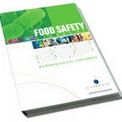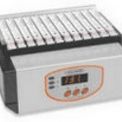A team of researchers from the University of Sunderland and bioMérieux, a leading company in the field of in vitro diagnostics, have achieved a new step in the fight against Pseudomonas aeruginosa, a bacterium responsible for deadly healthcare-associated infections, which kills tens of thousands of people throughout the world every year .1
FDA Clears bioMérieux’s VIDAS® NT-proBNPA High Medical Value Test for Diagnosis of Heart Failure
bioMérieux (Euronext: BIM), a world leader in the field of in vitro diagnostics, has received 510(k) clearance from the U.S. Food and Drug Administration to market VIDAS® NT-proBNP, a test that helps the diagnosis of heart failure.
bioMérieux and Wescor Bring a New Gram Staining Instrument for Enhanced Microbiology Laboratory Workflow
bioMérieux (Euronext: BIM) and Wescor, an ELITech Group Company have signed an agreement by which bioMérieux will become Wescor’s exclusive worldwide partner for marketing two customized slide stainer instruments for Gram and tuberculosis bacillus under the bioMérieux brand.
Quidel and bioMérieux Announce a Global Strategic Alliance in Rapid Diagnostics
Quidel Corporation (NASDAQ: QDEL) and bioMérieux (Euronext: BIM) have agreed to form a long-term global alliance in the area of rapid clinical diagnostics for the point-of-care. bioMérieux will become Quidel’s primary distributor for its QuickVue® rapid diagnostic tests outside the United States and the two companies intend to co-develop new rapid tests using Quidel’s market leading rapid test development capability and bioMérieux’s expertise and extensive library of antibodies and antigens. The companies will especially leverage their mutual expertise in the area of infectious diseases.
FDA Clears bioMérieux’s VIDAS® B·R·A·H·M·S PCT® Assay A First Indication for Sepsis Risk Assessment in the ICU
bioMérieux (Euronext: BIM), a world leader in the field of in vitro diagnostics, has received 510(k) clearance from the U.S. Food and Drug Administration to market VIDAS® B·R·A·H·M·S PCT®. The test will be used with critically ill patients on their first day of admission to the Intensive Care Unit (ICU) as an aid to assess their risk for progression to severe sepsis and septic shock.



